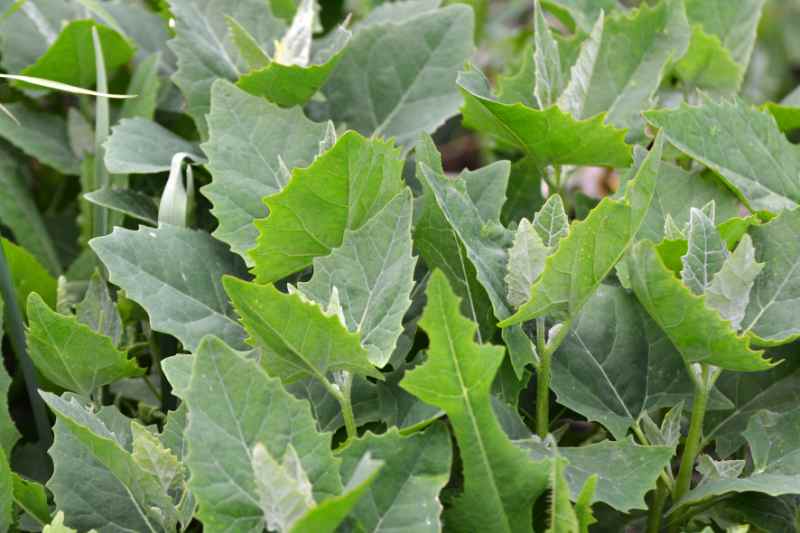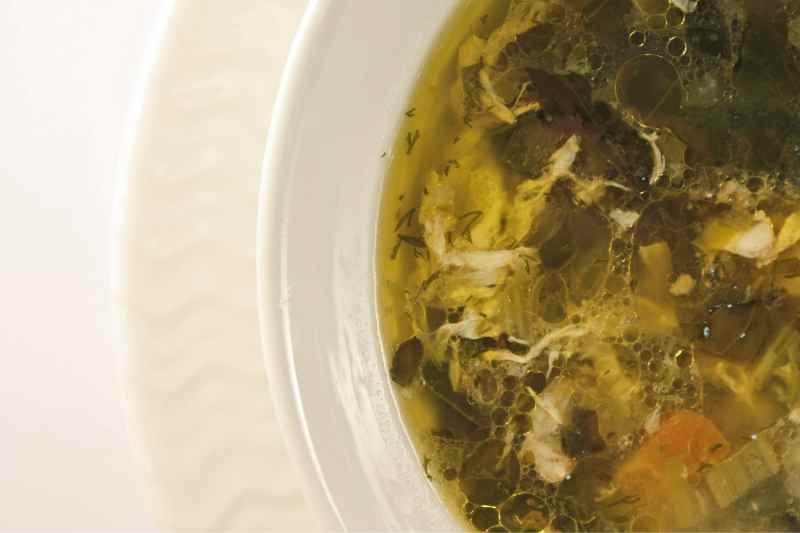Cultivated since the Middle Ages, orache (Atriplex hortensis) is one of the oldest vegetables we know. A substitute for spinach that supplanted it, it is often grown south of the Loire, as it tolerates heat better, like chenopod or tetragonous. It is a fine annual garden vegetable, recognisable by its triangular leaves, which must be resown each year. Reaching between 1 and 2 m in height, it yields prolifically and is among the attractive vegetables of the kitchen garden. It is also known as belle dame. Why miss out when it can be harvested from June to October if sowings are well staggered, when it is said to be rich in vitamin C and mineral salts, and low in calories? Here are a few ideas to cook it well and impress your guests!

Which part of orache do we eat?
The leaves! Orache is an old leaf vegetable with a flavour a little less pronounced than spinach. It is important to harvest young triangular leaves, much more tender, all the more so as heat makes it run to seed, causing a hardening of the foliar parts. To prevent the plant running to seed, pinch back the stems regularly and water well. There is the vigorous red orache, harvested very quickly after sowing (around six weeks), and the paler blond and green oraches, which are more compact.
Beware of confusing it with sea orache, Atriplex halimus, which, incidentally, can also be cooked, preferably steamed, and has a salty, tangy flavour.
How to prepare orache?
Like chard or the tetragonous, orache does not tolerate the cold of a fridge very well, where the leaves wilt very quickly. This is also why it is not offered for direct sale, even at markets. Therefore, I recommend cooking it the same day as harvest. Before preparing, simply rinse it as you would salad leaves.
Orache is equally suitable raw or cooked. Only the young leaves, which are smaller when intended for raw consumption, are picked. They are more flavoursome. For cooking, it is most often sautéed in a pan, but depending on the recipe the leaves can be steamed or boiled.
NB: leaves of red orache turn green when cooked, a bit like purple bean varieties that green when cooked.
Recipe ideas with orache
As a leaf vegetable, orache appeals to all plant-based cooking enthusiasts. Like spinach, it pairs very well with other leaf vegetables, but also with green vegetables (courgette, peas), as well as eggs and cheeses. It forms the basis of tasty rustic cooking. Here are some ideas to cook it differently throughout its growing season:
Orache — raw
-
Orache leaves can make an original mesclun with rocket, beetroot shoots and purslane, for example. Sprinkle crushed hazelnuts, toasted buckwheat kernels (kasha) or some pumpkin seeds to add a little crunch to a light, flavoursome salad.
-
Orache can also serve as a condiment leaf when added to a refreshing summer gazpacho.

Orache — cooked
- Sautéed like spinach. This is the most familiar way to cook them, in butter or cream, according to preference. For this use, larger leaves are picked. Personally, I enjoy these leaf vegetables simply with a knob of butter, fleur de sel and a little pepper. A variation is to steam them, then add the butter to melt on top — delicious! You can also mix it with sorrel to mellow its tartness. It can also be cooked with other leaf vegetables suited to gentle pan cooking such as spinach, chard, and why not celosia, amaranth and fine herbs like parsley or spring onion tops.
- In a rustic soup: the "Ciorba de loboda", or orache soup in the Romanian style, a traditional soup of the montane regions, a kind of local green or red borscht. It combines red or green orache with various vegetables (carrots, onions, celery…), cooked rice, herbs such as lovage and sorrel, and lemon, which gives it a slightly sharp, tangy flavour — unusual and very pleasant.

- In a gratin, the leaves are briefly cooked by steaming or boiling and folded into a thick béchamel, then browned with a little cheese (Comté or sheep's cheese) for early autumn main dishes.
- In a quiche, with egg and cream, or in a vegetarian pie with aromatics, garden herbs, and for example a mix of orache-nettles-spinach or chard.
- In a flan, since the leaves go well with eggs and cream: cook them in a dariole of vegetables, to which herbs and cheese are added to taste.
- In an omelette with a few sorrel leaves to mellow it.
- In Indian dal: with red lentils, curry and milk or coconut cream, it can be cooked exactly like spinach.
- As small stuffed parcels: you can even stuff the largest leaves with rice or leftover risotto, for a 100% vegan dish! Wrapping beef meatballs (or leftover meats), orache makes almost Oriental-style stuffed parcels!

Learn more
Recipes from the web such as orache pie, the red orache gratin with country ham or an original recipe accompanying fish Turbot, orache and mesclun. And in bookshops, a very lovely book: Spinach, orache and tetragonous by Jérôme Goust (Éditions Actes Sud).
Find everything about orache in our dossier Orache: sowing, cultivation, harvest and in our article Growing orache, an ancient vegetable with a spinach-like flavour. Olivier tells you more about orache in the video What if you replaced spinach with orache or chenopod?
Discover also the tetragonous or New Zealand spinach in our complete dossier.
Want to rediscover the taste of forgotten old vegetables? Check our dedicated sheets on these wonderful vegetables: 7 uncommon root vegetables, scorzonera, skirret, cardoon, Helianthi, sea kale...
































Feedbacks